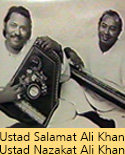
The Gharanas
In the medieval period, Hindustani classical music flourished under the patronage of maharajas and later of zamindars Tansen in the court of Emperor Akbar is one such famous example. These patronages gave birth to various gharanas. A gharana is a system of social organization or school linking musicians or dancers by lineage and/or apprenticeship, and by adherence to a particular musical style. The gharanas sprouted from the concept of the ‘guru-shishya’ tradition. Each gharana, with its own style of genius had different approaches to the form of music; the more well-known gharanas (among a seemingly endless list) being:
Gwalior Gharana
The Gwalior gharana is one the oldest Khayal gharanas and one to which most classical musicians trace the origin of their style, The rise of the Gwalior gharana (1542-1605), came from the town of Gwalior in Rajasthan.
We have recordings of:
Krishnarao Shankar Pandit, Laxman Krishnarao Pandit, Meeta Pandit, Mukul Shivputra, Pandit D.V. Paluskar, Pandit Jal Balporia, Pandit Kumar Gandharva, Pandit Narayanrao Vyas, Pandit Omkarnath Thakur, Pandit Ram Marathe, Pandit Ulhas Kashalkar, Pandit Vidyadhar Vyas, Pandit Vinayakrao Prawardhan, Satyasheel Deshpande, Smt. Malini Rajurkar, Smt. Vasundhra Komkali, Sunanda Patnaik.
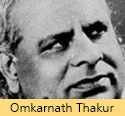


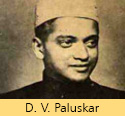
Agra Gharana
Agra gharana is a tradition of north Indian classical vocal music descended from the Nauhar Bani (around 1300 A.D., during the reign of Emperor Allaudin Khilji of Delhi.) The first known musician of this tradition is Nayak Gopal. The style prevalent then in the gharana was “Dhrupad-Dhamar”. Ustad Ghagghe Khudabuksh (1790-1880 AD) introduced the “Khayal” style of Gwalior Gharana into Agra gharana. Furthermore the khayal style of Atrauli gharana was added in the late 19th Century. This is the only gharana that still continues with Dhrupad Dhamar along with Nom-Tom Alap, Khayal, Tappa Thumri, Tarana, Hori, Dadra, Ghazal, Kaul, Rasiya etc.
We have recordings of:
Shrimati Lalit Rao, Ustad Faiyaz Khan “Prem Piya”, Ustad Kale Khan “Saras Priya”, Ustad Khadim Hassain Khan “Sajan Piya”, Ustad Latafat Hassain Khan “Prem Das”, Ustad Sarafat Hassain Khan “Prem Rang”, Ustad Vilayat Hussain Khan “Pran Piya”, Ustad Yunus Hassain Khan “Darpan”, Zohrabai.
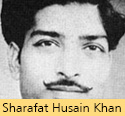
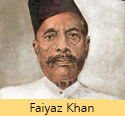
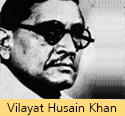
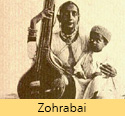
Kirana Gharana
Kirana gharana is one of the most prolific Hindusthani Khayal gharanas. Derived from Kirana or Kairana, a village near Kurukshetra in Haryana, it is also the birthplace of Ustad Abdul Karim Khan (1872-1937), who was one of the most important exponents of this gharana. While the roots of the tradition can be traced back to his great-grandfather Ghulam Ali and Ghulam Maula, the brother of Ghulam Ali, Ustad Abdul Karim Khan is considered by some to be the real founder of the Kirana gharana.
A frequent visitor to the Court of Mysore, Ustad Abdul Karim Khan was influenced by Carnatic music. Much to the credit of Abdul Karim Khan, today most Hindustani musicians from Karnataka are exponents of Kirana gharana, which has imbibed many of the features of the Carnatic tradition. Particularly, the culturally fecund border region between Karnataka and Maharashtra is famous for its tradition of the Kirana School of singing and nearly all the exponents of the Kirana gharana have hailed from this region.
Another towering figure of this gharana in the early 20th century was Ustad Abdul Karim Khan’s cousin Ustad Abdul Wahid Khan (1874-1949) Pandit Bhimsen Joshi is considered to be the foremost representative of the Kirana School of music today.
We have recordings of:
Abdul Karim Khan, Abdul Wahid Khan, Basavaraj Rajguru, Bhimsen Joshi, Gangubai Hangal, Hiabai Badodekars, Pandit Channulal Mishra, Rasiklal Andharia, Roshan Ara Begum, Sangameshwar Gurav, Saraswati Rane, Sawai Gandharva.
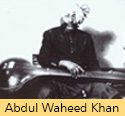

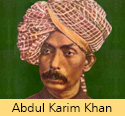

Jaipur-Atrauli Gharana
The Jaipur-Atrauli gharana (also known as the Atrauli-Jaipur gharana, Jaipur gharana and Alladiyakhani gharana) is a dissident branch of the Agra gharana, founded by the illustrious Ustad Alladiya Khan (1885-1946). This gharana is unique, as it was founded on the basis of Khayal Gayaki, whereas other major gharanas were founded on Dhrupad-Dhamar Gayakis and eventually took to Khayal Gayaki.
Founded by Ustad Alladiya Khansaheb as an alternative singing style to adjust to his handicapped and damaged voice from singing for days at a time, signature raags of this gharana (some revived or created by Alladiya Khan) are Sampoorna Malkauns, Basanti Kedar, Basant Bahar, Kaunshi Kanada, and Nat Kamod.
We have recordings of:
Arati Ankalikar-Tikekar, Ashwini Bhide-Deshpande, Bhurji Khan, Dhondutai Kulkarni, Kesarbai Kerkar, Kishori Amonkar, Mallikarjun Mansur, Mogubai Kurdikaar, Padmavati Shaliagram-Gokhale, Raghunandan Panshikar, Shruti Sadolikar-Katkaar, Warmanrao Sadolikar.
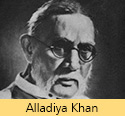

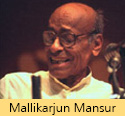
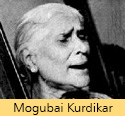
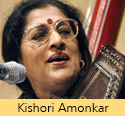

Rampur-Sahaswan Gharana
Rampur-Sahaswan gharana is a gharana of Hindustani Classical music centred in the North Uttar Pradesh towns of Rampur and Sahaswan. Ustad Inayat Hussain Khan (1849-1919), was the founder of this gharana.
Inayat Khan was a child prodigy, and he married the daughter of Haddu Khan of the Gwalior gharana and took talim (training) from Ustad Bahadur Hussain Khan, a descendant of Mian Tansen himself. The style has influence of the Dhrupad singing typical of the Gwalior gharana, and the Rampur-Shahaswan style is sometimes regarded as an off-shoot of the Gwalior Gharana. This gharana style is known for the diversity and intricacy of the tans (rapid-fire elaborations), as well as tarana singing.
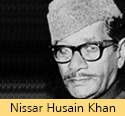
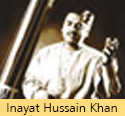


Patiala Gharana
The Patiala gharana is one of the most prominent gharanas of vocal Hindustani Classical music. It was initially sponsored by rulers of Patiala state of Punjab, which was famous for ghazal, thumri and khayal.
Patiala gharana was founded during the rule of Maharaja Mohinder Singh by Ustad Jasae Khan and other early proponents like Ditae Khan and Ustad Kalu Khan, who became singers in the court of Maharaja of Patiala in late nineteenth century. Patiala gharana reached its zenith during mid-twentieth century under stalwarts like Bade Ghulam Ali Khan.
We have recordings of:
Ajoy Chakraborty, Bade Ghulam Ali Khan, Begum Akhtar, Jagdish Prasad, Lakshmi Shankar, Munni Begum, Naina Devi, Parveen Sultana, Ustad Amanat Ali Khan and Ustad Fateh Ali Khan, Ustad Mohammad Hussain Sarahang, Vasantrao Deshpande.

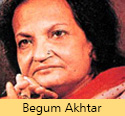
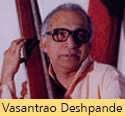

Mewati Gharana
The Mewati gharana is a historic family tradition of Indian classical Music that started in the sixteenth century. The fountainhead of Mewati Gharana, Ustad Ghagge Nazir Khan, born in Birla village in the Mewat region, was the court musician of Maharaja Jaswant Singh of the kingdom of Jodhpur in the Mewat region. The most well known exponent of this gharana is Pandit Jasraj.
We have recordings of:
Pandit Jasraj, Pandit Maniram, Pandit Motiram, Pandit Pandit Prataparayan, Pandit Sanjeev Abhyankaar, Ratan Mohan Sharma, Smt Kala Ramnath.

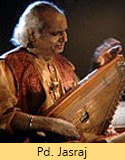
Sham Chaurasi Gharana
Sham Chaurasi gharana is a gharana, known for vocal duets, most notably represented in modern times by the brothers Salamat Ali Khan and Nazrat Ali Khan. The gharana is centred at a village of the same name in the Hoshiarpur district of Punjab (India); variant spellings include Shamchurasi etc.
The gharana is believed to have been founded in the 16th century by Mian Chand Khan and Main Suraj Khan who were contemporaries of Main Tansen at the court of Mughal Emperor Akbar. Successive generations of musicians in the gharana specialized in the dhrupad form of singing and evolved a tradition of duet vocal jugalbandi performances.

